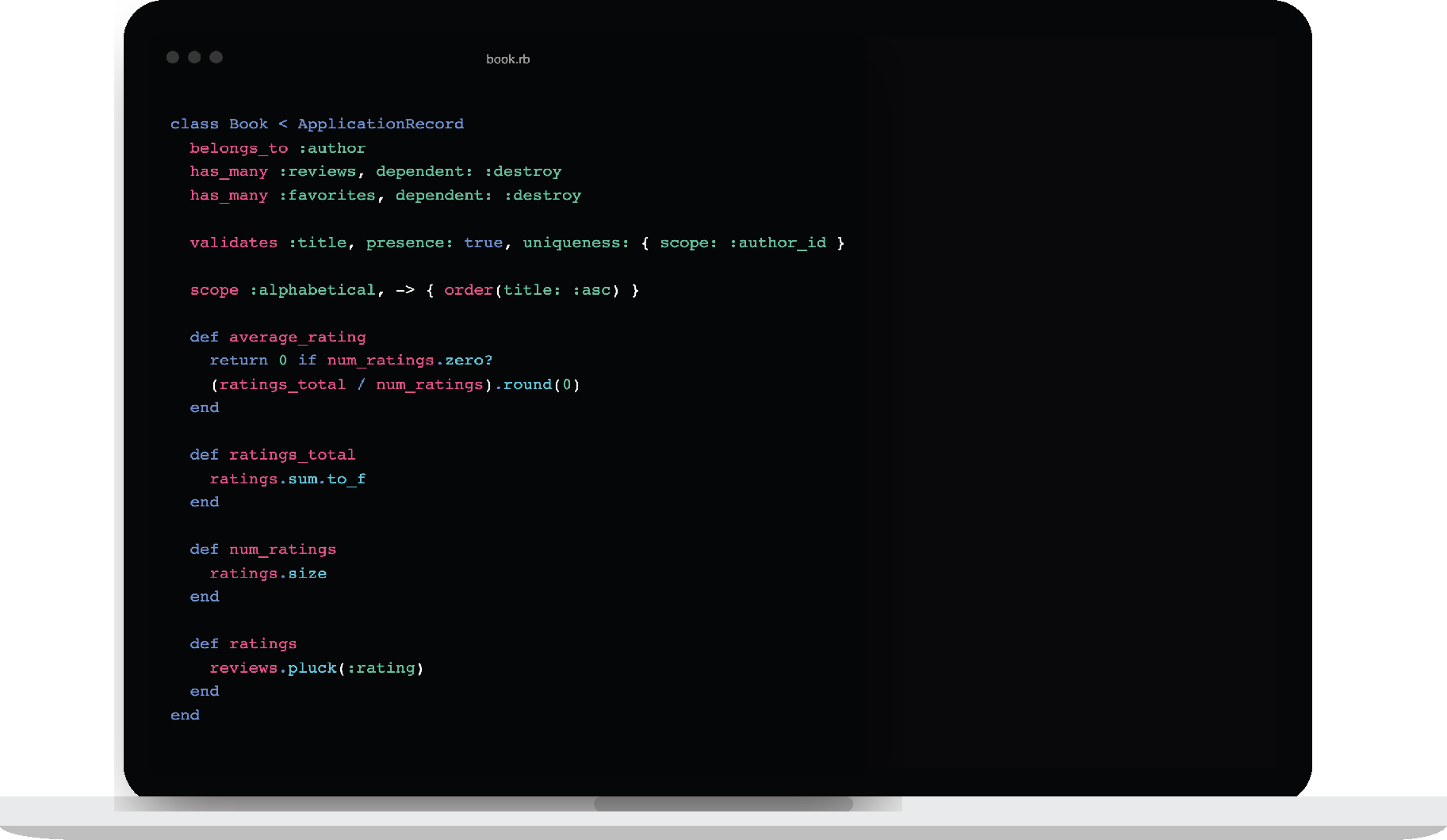With a number of powerful programming languages and frameworks to choose from, developers today must pick the right program for the right project. Here at LaunchPad Lab, there’s nothing we love more than identifying the perfect solution for our clients—from Ionic’s mobile framework to a headless CMS and everything in between.
Today, we’re unpacking the unique benefits of building on Ruby on Rails and why our developers recommend this option to our clients.

What is Ruby on Rails?
Although commonly bundled together in conversation as “Ruby on Rails”, Ruby and Rails serve two distinct purposes.
Ruby: Ruby is the programming language. While it tends to be used for logic-based code and database management, it’s a powerful language with a number of abilities, including automating tasks, crawling and scraping websites to extract information, building helpful tools and utilities, and much more.
Rails: Rails is an open-source web application framework, built using the Ruby programming language. Rails enables developers to quickly build powerful web applications for businesses both large and small.
What Have We Built With Ruby on Rails?
With Ruby on Rails, you can build a multitude of applications. Some of our work includes:
- A client portal for Apex Leaders
- A community-focused web application for Artlook
- A merit-planning web application for SimplyMerit
Building a Ruby on Rails app tends to be very user-interactive and database-friendly, making it a perfect solution for e-commerce stores, informational portals, social networks, SaaS solutions, and much more.
If you have a business that requires data management or features where users must input data, Rails apps make it incredibly simple to achieve. Plus, with an array of front-end elements, you can easily create custom forms to engage with users or build an API that interacts with your front-end library of choice.
Why Ruby and Rails?
1. It’s human-friendly.
One of our favorite things about building apps and digital experiences on Ruby is how human-friendly it is. Many of the methods that are built into Ruby tend to be named in an instinctive, easy-to-recognize manner.
It’s also a language that is often intuitive to learn. Our developers note the comparative ease when learning Ruby compared to other programming languages—and while every coding language has its quirks, Ruby tends to be generally easy to understand, helping developers grasp the technology quickly.
Because Ruby is easy to read and write, it’s a great option for logic-based coding. In the developer world, we often talk about “pseudo-coding”—where you write in layman’s terms what you want to accomplish. And with Ruby, the translation from pseudo-code to actual Ruby code is relatively minimal.
2. It’s known for promoting Convention over Configuration.
Part of the Ruby on Rails mission is to provide conventional configurations. This helps reduce and even eliminate many of the recurring decisions that developers face when creating information systems on the wheel. For the Ruby platform, there’s no need to reinvent the wheel—instead, productivity is increased with conventional configurations to lean on.
Another benefit is that the core elements of Ruby and Rails have stayed more or less consistent over time. Although these platforms certainly continue to innovate, they maintain a number of core conventions, which helps developers evolve naturally with the language and framework.
3. It provides a strong community of developers.
The Ruby on Rails community of developers is robust and connected, which results in a number of pre-existing libraries for developers to use and build. Due to Ruby’s mission of conventional configurations in the name of efficiency and productivity means hundreds of developers have packaged and open-sourced their code to help solve common problems.
From this library of open-sourced code, Ruby on Rails includes and incorporates some of this code into the core framework. This helps standardize common challenges and needs, making these developer-sourced updates the default for many projects.
4. It’s easy for your team to be successful.
If you’ve had a project built on Ruby on Rails by a team of external developers, don’t worry—handing it off to your internal development team is usually pretty seamless. Ruby on Rails offers extensive documentation in the community to help support upgrades, errors, and more.
Plus, because of the human-friendly philosophy at the heart of Ruby on Rails, errors are relatively descriptive and easy to read—so your team can likely navigate it without stress or wasted time.
5. You can integrate with other technologies.
When building on Ruby on Rails, it’s easy to integrate other technologies into your stack, such as.
- File storage: File hosting has evolved and become standardized for Ruby on Rails. For instance, if you’re integrating with AWS to host files, there are many libraries available that make it simple to integrate successfully.
- Email marketing: If your business needs frequent email marketing campaigns and integration, you can connect Ruby on Rails with a platform responsible for the actual email delivery—such as SendGrid. Rails makes it seamless to connect with your delivery provider and ensure effective integration every step of the way.
- JavaScript: As a whole, the Rails community tends to be open and understanding of what the development industry needs as a whole. Because JavaScript is an important, impactful language in development, Rails seeks new, helpful ways to keep up with the JavaScript community and offer new integrations.
Ready to Learn More?
If you’re looking for a partner to elevate your digital experience, LaunchPad Lab is here to help. Our team can help you differentiate yourself from your competitors with an amazing digital experience. Book your free discovery call with us to get started.



